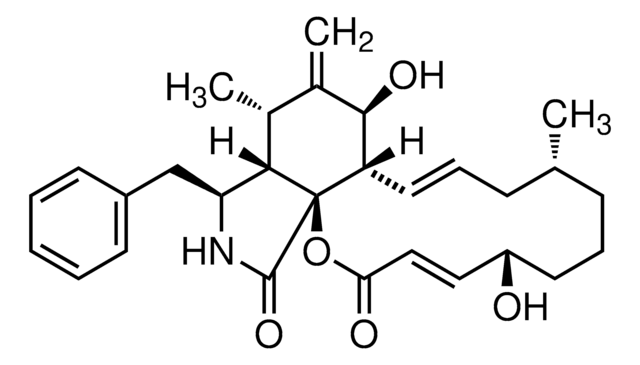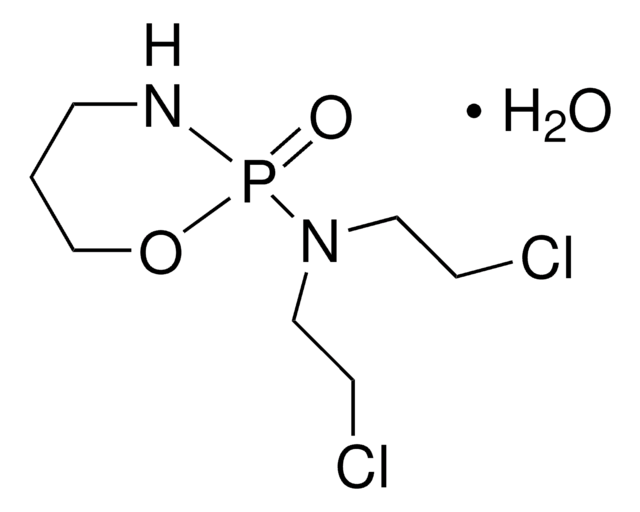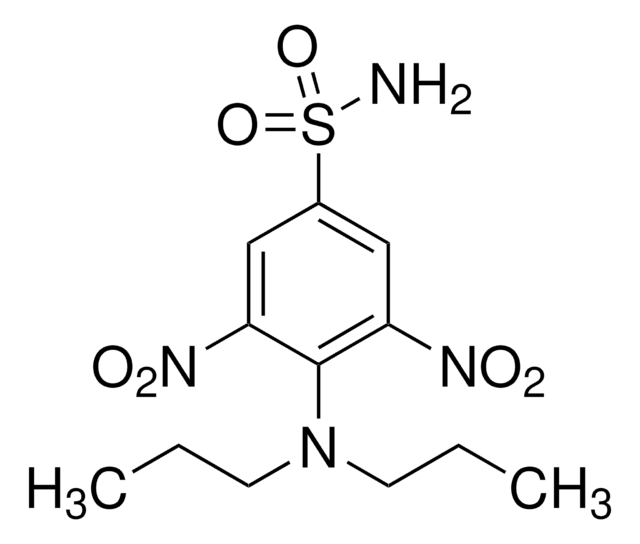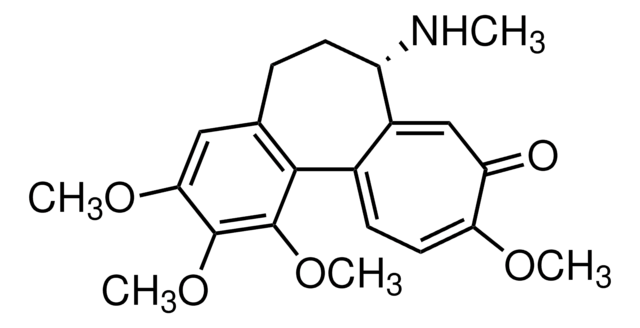234115
Colchicine, Colchicum autumnale
Colchicine, Colchicum autumnale, CAS 64-86-8, is an inhibitor of mitosis that disrupts microtubules and inhibits tubulin polymerization. Induces apoptosis in PC12 and cerebellar granule cells.
別名:
Colchicine, Colchicum autumnale
About This Item
おすすめの製品
品質水準
アッセイ
≥94% (HPLC)
フォーム
powder
メーカー/製品名
Calbiochem®
保管条件
OK to freeze
protect from light
色
yellow to off-white
溶解性
ethanol: 10 mg/mL
water: soluble
輸送温度
ambient
保管温度
10-30°C
InChI
1S/C22H25NO6/c1-12(24)23-16-8-6-13-10-19(27-3)21(28-4)22(29-5)20(13)14-7-9-18(26-2)17(25)11-15(14)16/h7,9-11,16H,6,8H2,1-5H3,(H,23,24)/t16-/m0/s1
InChI Key
IAKHMKGGTNLKSZ-INIZCTEOSA-N
詳細
生物化学的/生理学的作用
Inhibitor of mitosis
警告
その他情報
Lindenboim, L., et al. 1995. J. Neurochem.64, 1054.
Leung, M.F., and Sartorelli, A.C. 1992. Leuk. Res.16, 929.
Santell, L. 1992. Exp. Cell Res. 201, 358.
Salmon, E.D., et al. 1984. J. Cell Biol.99, 1066.
法的情報
シグナルワード
Danger
危険有害性情報
危険有害性の分類
Acute Tox. 2 Oral - Muta. 1B
保管分類コード
6.1A - Combustible acute toxic Cat. 1 and 2 / very toxic hazardous materials
WGK
WGK 3
引火点(°F)
Not applicable
引火点(℃)
Not applicable
適用法令
試験研究用途を考慮した関連法令を主に挙げております。化学物質以外については、一部の情報のみ提供しています。 製品を安全かつ合法的に使用することは、使用者の義務です。最新情報により修正される場合があります。WEBの反映には時間を要することがあるため、適宜SDSをご参照ください。
Jan Code
234115-GM:
US2234115-1GM:
234115-1GM:
US2234115-5GM:
234115-5GM:
234115-1.1ML:
試験成績書(COA)
製品のロット番号・バッチ番号を入力して、試験成績書(COA) を検索できます。ロット番号・バッチ番号は、製品ラベルに「Lot」または「Batch」に続いて記載されています。
この製品を見ている人はこちらもチェック
ライフサイエンス、有機合成、材料科学、クロマトグラフィー、分析など、あらゆる分野の研究に経験のあるメンバーがおります。.
製品に関するお問い合わせはこちら(テクニカルサービス)






